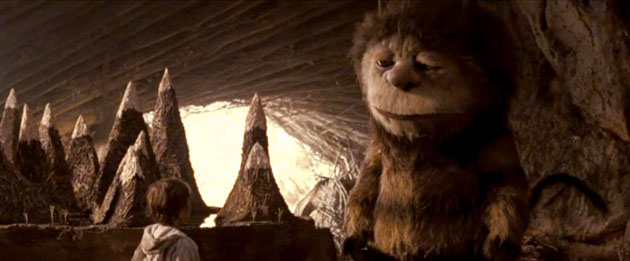K.K. Barrett

AS: What would you say are some of the characteristics that a production designer should have?
KK: I’d say number one is curiosity. Number two is observation. Curiosity, observation, and decisiveness. That belongs, that doesn’t belong. We don’t need that, we need this. It’s the same as being editorial. Making decisions quickly doesn’t mean you can’t change them. It means it unclutters the way so you can concentrate on things you haven’t solved yet, that aren’t so obvious to deduce. Setting aside all the quick, easy answers may inform the ones that aren’t clear yet.
Then you may go back and say, That’s not going to be in our movie any more. We’ve grown so much since then. You start to see the tone and you start to see what belongs. You start to see how it’s shot. I have to be on set for the first month or so of a film as much as I possibly can to see what the camera’s editing. What’s being found and what’s not being included. So that I know how to steer it. What to give it. What it’s missing. I’m not talking about key props. Sometimes it can be claustrophobia. They shouldn’t be claustrophobic. You know the scene where he’s in yet another restaurant in yet another room somewhere? Let’s take that outside. Let’s get down to the dynamics of the film and let it breathe. Let’s not be in someone’s tormented head in a small space for the whole movie. Let’s have a dynamic, so if you really want to make a point with that, you can take it out and then you bring it back.
In Where the Wild Things Are there were so many scenes written in a forest. And we knew we were going to get tired of it. The DP got really tired of it and decided that one expedition had to be somewhere completely palate-cleansing from that. And I already had made three different forests because I knew that problem existed. One of the forests we painted all the pine trees white.
AS: These forests were all done at exterior locations?
KK: Interior and exterior. We had to do both because we were working with a child that can only work until 9 pm at night and we had a lot of night scenes that go on and on and on so we had to build the forest on stage.
AS: Where did you shoot the movie?
KK: Outside of Melbourne, Australia. And I’d always wanted to go to the sand dunes and we finally did that at the end of the movie. It was a long ways away. And I knew that would be a palette-cleanser from all this forested interior as exterior. Mind-clearing in a way. You want to feel like you’ve gone a long distance and in a forest you really can’t get that. We all became aware, after we’d shot for a while, that we couldn’t do that scene in a forest. We had to change it.
Often when I break down a script I’ll understand that they keep going back to the same place. But there’s no reason they have to go to that place. Sometimes it’s not really necessary. It’s convenient. Or nobody had thought about it up to that point. And it’s your job to think about it. Why are they there? Why can’t they be someplace else? What does it do to the character? How else can we know something about their past or about another facet that makes them more complex?
Pingback: Grant Major